- News
- Reviews
- Bikes
- Accessories
- Accessories - misc
- Computer mounts
- Bags
- Bar ends
- Bike bags & cases
- Bottle cages
- Bottles
- Cameras
- Car racks
- Child seats
- Computers
- Glasses
- GPS units
- Helmets
- Lights - front
- Lights - rear
- Lights - sets
- Locks
- Mirrors
- Mudguards
- Racks
- Pumps & CO2 inflators
- Puncture kits
- Reflectives
- Smart watches
- Stands and racks
- Trailers
- Clothing
- Components
- Bar tape & grips
- Bottom brackets
- Brake & gear cables
- Brake & STI levers
- Brake pads & spares
- Brakes
- Cassettes & freewheels
- Chains
- Chainsets & chainrings
- Derailleurs - front
- Derailleurs - rear
- Forks
- Gear levers & shifters
- Groupsets
- Handlebars & extensions
- Headsets
- Hubs
- Inner tubes
- Pedals
- Quick releases & skewers
- Saddles
- Seatposts
- Stems
- Wheels
- Tyres
- Health, fitness and nutrition
- Tools and workshop
- Miscellaneous
- Buyers Guides
- Features
- Forum
- Recommends
- Podcast
feature
What do new patents tell us about the future of road bike disc brakes?
Disc brakes have gradually taken over from rim brakes in the pro peloton since the UCI first allowed them to be trialled in 2015 and they’ve become the default option offered on most mid-level and top-tier road bikes, but is there continuing technological innovation to support their use? We’ve looked at patents from Shimano, SRAM and Campagnolo to find out.
Manufacturers claim that disc brakes offer better braking than rim brakes, particularly in wet conditions or on long alpine descents. Of course, they’ve been used on mountain bikes and some non-race road bikes for years but their widespread adoption on performance road bikes is much more recent. The UCI confirmed that disc brakes were authorised for road racing on a permanent basis only in 2018.
All of the top-level pro teams now use disc brakes, Ineos Grenadiers having finally made the switch, and many road bikes released over the past two or three years have done away with a rim brake model altogether. The 2023 Giant Propel launched in mid-August, for example, is available only with disc brakes.
The road bike industry has clearly made up its mind about where it wishes to head and the market has shifted in the same direction – when the same bike is available in disc brake and rim brake formats, it’s always the disc brake version that sells better – but are the key brands working on further disc brake tech?
Patent publications for disc brakes
Below is a graph showing the number of patent applications published since 2010 in the class of ‘brakes specifically adapted for cycles’ for both rim brakes and disc brakes. The recent widening of the gap between the numbers of disc and rim brake publications mirrors the current ethos of bicycle manufacturers.
The increase in disc brake-related publications around 2014 can be explained by a rise in innovation levels around the release years of first-iteration disc groupsets for the road. These release years are indicated in the graph below.
Check out our review of Shimano's Dura-Ace R9200 Groupset
Shimano, SRAM and Campagnolo are the three best-known groupsets for the western market. The graph below shows cumulative disc brake patent publications for these three manufacturers since 2010.
Also indicated with solid markers are the release years of disc brake options for each manufacturer’s top-tier groupsets. The striped marker for Shimano corresponds to the 2013 release of BR-R785 (below), its first hydraulic disc brake for road bikes as opposed to its full top-tier groupset offering released in 2016.
Since, and even before, this early release, Shimano has shown relatively consistent innovation in the field. However, it is worth noting that some of their publications, particularly before 2016, can be attributed to its mountain bike disc brake groupsets.
Find out how the SRAM Rival eTap AXS groupset performs
SRAM, on the other hand, has been much steadier in its rate of publication of disc brake applications, though had minimal relevant publications before its early market entry in 2013.
While Campagnolo was the last of the three key groupset brands to introduce a top-tier disc brake groupset, the rate of its relevant patent publications has since picked up. Appearing unfazed by its later market entry, Campagnolo’s director of global marketing said the company’s objective was not to be the first but to offer the best product.
It is unsurprising that Shimano overall vastly outpaces SRAM and Campagnolo in terms of disc brake-related patent publications; with its dominant market share leading to around $4 billion (around £3.4 billion) in sales in 2021, it can afford to innovate at a far greater scale.
What does the innovation address?
Critics often argue that the claimed improved braking performance of disc brakes in road cycling is outweighed by safety concerns, overheating problems, and the simplicity of maintenance of the rim brake. We can explore a few of the published patents to assess whether or not these issues are being addressed by component manufacturers.
In current implementations, disc brake bikes weigh more than their rim brake counterparts. Frames and forks also require increased frame thicknesses to cope with the torsional loads while braking – which begin to add up in a sport famous for its focus on ‘marginal gains’. Manufacturers must surely be looking to shave any gram possible from disc brakes.
US Patent US 9777784 B2, courtesy of Shimano, seeks to address this weight issue with a disc brake rotor with hollow portions.
The figure above shows a cross-section of a disc brake rotor with a hollow chamber 52 formed between a central portion 24 and the braking surface 32. The effect is decreased weight while maintaining adequate stiffness of the rotor.
However, US 9777784 B2 also discloses a more subtle effect arising from this embodiment. Disc brake rotors can heat to high temperatures during heavy braking, and thermal stresses can warp the rotor out-of-plane.
This warping can result in the brakes squealing and rubbing on the calliper pads. The patent suggests that the hollow portions 52 may combat this overheating. Within the hollow chamber cooler, denser air near the central portion 24 will circulate radially towards the braking surface 32 by centrifugal force.
The braking surface, where all the heat is generated, can therefore be cooled more efficiently without the added weight of alternative cooling structures.
When should you get new disc brake rotors?
The patent goes further, to add that the hollow chamber 52 may be filled with a liquid coolant material for even better thermal management. This application was originally filed back in 2011, and while we are yet to see such a novel system implemented in products from Shimano, it is interesting to see that they had the foresight to tackle problems arising in disc brakes before their widespread use extended from mountain biking to the road.
Find out everything you need to know about disc brakes with our definitive guide
Another problem also often cited by proponents of the traditional rim brake is safety and the worry that a rapidly rotating metal rotor could harm a rider caught up in a crash. Shimano has tried to address this problem in US Patent US 10746241 B2, published in August 2020.
As displayed above, a rotor 40 is enclosed within a rotor cover 50, to limit contact of a rider’s fingers, for example, with the rotor 40. This solution appears simplistic at first, but upon further inspection, it includes more sophisticated features. In particular, the rotor cover includes a multitude of openings 72, 80.
Too many openings and the cover could generate too much turbulent drag as the bicycle cuts through the air, whereas none at all would affect rotor cooling from rapidly passing air. A fine balancing act must therefore be met between aerodynamic efficiency and cooling of the rotor.
Does the bike industry really want to force you on to disc brakes?
A feature of note is the sweeping shroud 82 at the bottom of the cover, designed to direct air towards the rotor, presumably for enhanced cooling.
The solution presented by US 10746241 B2, therefore, addresses safety concerns without apparent compromise in thermal regulation of the rotor. Again, however, such a system is yet to see used in either the professional peloton or on everyday commutes.
When routed externally, hydraulic hoses connecting the handlebar controls to the disc brake callipers can cause aerodynamic drag and most people prefer the aesthetic of internal routing. Whilst this is not an issue exclusive to disc brake systems, the market is now demanding a clean look with the hoses hidden away inside the frame and fork. Campagnolo has also been busy filing applications for disc brake patents, one in particular to address this issue.
US 10442493 B2, as shown above, discloses a calliper 20 mounted on a portion of the bike fork 11, and a connector 30 for a hydraulic hose. The connector 30 is however located completely within the fork 11, such that the hydraulic hose may be fully internally routed. There’s no hose at all on show.
Internal routing can make some maintenance tasks more time-consuming but Campagnolo appears to have doubled down on aesthetics with this patent application – an indication that it believes discs are here to stay.
The next step – implementing the innovations
The shift from rim to disc brakes has clearly been a priority for manufacturers. The uptick in patent applications indicates a willingness to innovate by big brands to stay ahead of the competition, but it will be interesting to see to what degree this innovation trickles down into off-the-shelf products. The bicycle industry is actively trying to address the problems that are cited.
For example, in its latest top-tier groupset release, Shimano made subtle improvements to its hydraulic brakes, such as providing an all-new one-piece calliper that “maximises stiffness and reduces weight” and that provides a marginally wider pad clearance that “decreases the chance of rotor rub”.
However, all of these patents showing that the big players are continuing to refine their disc brake systems suggest that they agree, at least to some degree, with four-time Tour de France winner Chris Froome’s statement that “the technology is not quite where it needs to be”.
What issues would you like to see the big brands address with their next-generation disc brakes? And do you think there's a future for rim brakes on mid to high-level road bikes? Let us know in the comments below.
Latest Comments
- anagallis_arvensis 18 min 22 sec ago
It was, two cars did so, the solid line was ending, the road fairly straight the view clear. Are you seriously suggesting cyclists should alter...
- Oakhambike 21 min 22 sec ago
£11.5k for a bike weighing over 8kg that's 2 fingers to customers let alone UCI
- HarrogateSpa 23 min 2 sec ago
No trees need to be cut down for a cycleway....
- Dnnnnnn 36 min 40 sec ago
I'm going to show my bike a picture of this shed and tell it, "If you don't behave..."
- Hirsute 1 hour 24 min ago
Ex black cab https://twitter.com/KingArtAT/status/1783296299787309088
- bensynnock 2 hours 20 min ago
Quite. I was wondering where the cycling infrastructure is located that causes drivers to go 90 on the M3?
- I love my bike 2 hours 49 min ago
If one is prepared to pay £28 for a TPU tube, the butyl comparison should be Continental's Supersonic ~50g or Schwalbe at 70g. Both costing £8 - ...





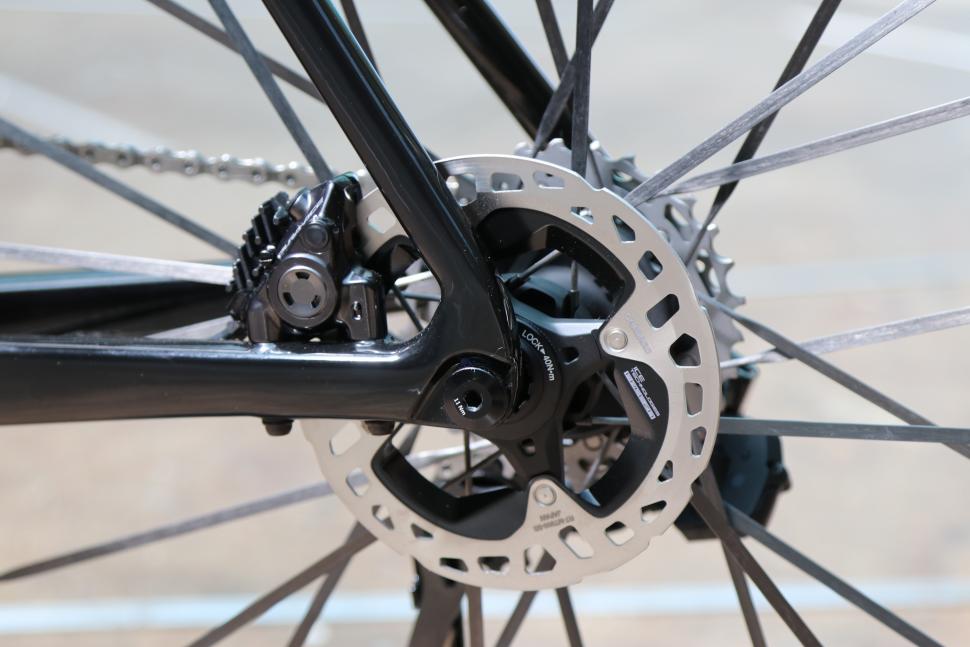
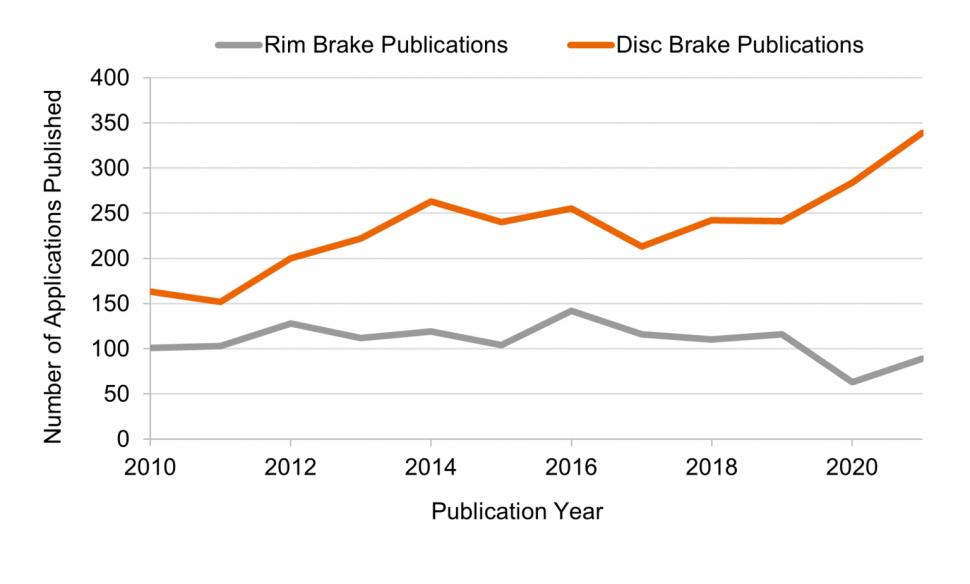


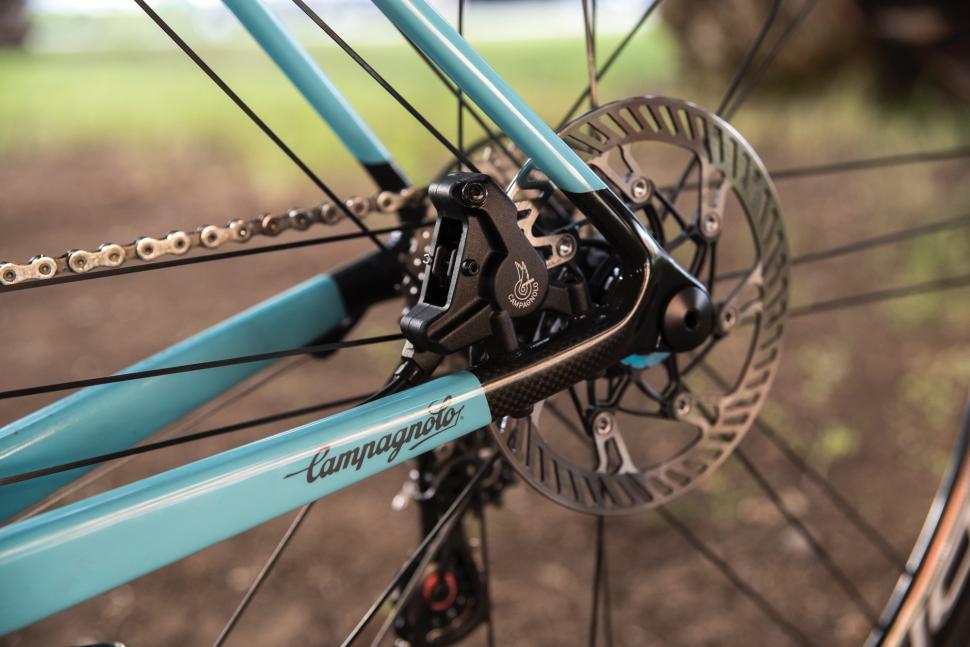

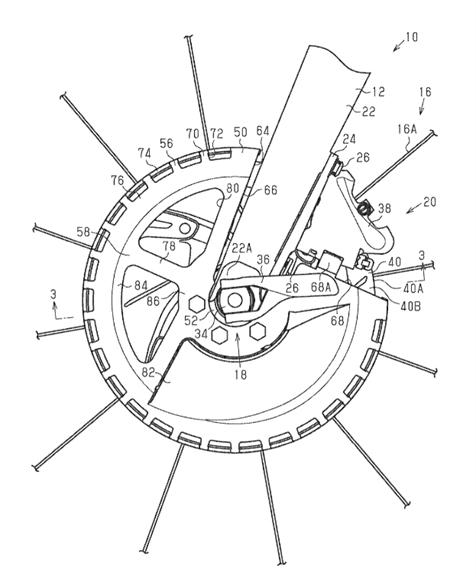
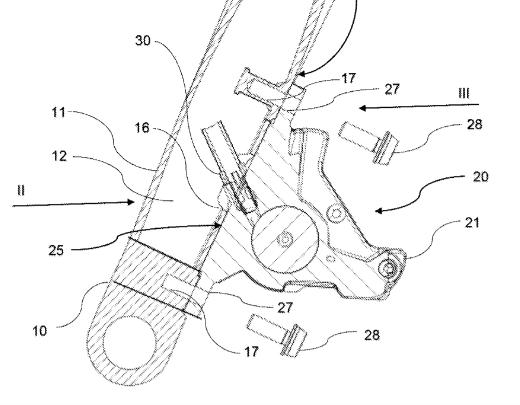

Add new comment
28 comments
"Innovations that could be coming to your bike soon"...what you really mean is "Innovations that will be driving up the price of your bike soon"; that's what you really mean.
I use Shimano XT BR-M734 cantilever rim brakes with the original heavy duty 2 mm cables from the levers and I have no problem with people using disc brakes, but I just do not need them, as I cans stop perfectly adequetly in any road conditions as I have proved over many winters.
The secret is to know how to set them up properly, once that is done you will have no problems.
I am not one to change for the sake of it if what I have works just fine.
The sadest thing for me though is there is a generation of cyclist who will never have had the experience of riding a quality frame and forks that have not been beefed up to accomodate disc brakes, the difference is most noticeable on the forks but the back end ‘feel’ suffers as well in my experience.
Finding those 2mm cables is an absolute nightmare.
I had the dx version, loved the solidity of the 2mm cables.
Upgraded to the years after XT sti, which went to 1.6s, with curve cantis. The straddle cable on those needed a 2mm cable, which of course never lasted long so had to cut down the full length cables and file down a perpendicular barrel to an in line barrel to make them fit. Would occasionally find 2mm online but it was never an easy task, often mislabelled thinner ones. The xt cables were not just twisted like a conventional cables but braided.
This is one of the biggest pieces of cobblers I've ever read on road.cc. You're delusional if you believe you can feel the difference between fractions of a millimetre of material between a rim and disk braked frame. In the early days of MTB there was literally no difference between rim and disc brakes frames and they got a far bigger hammering than any road frame. Feel was unaffected.
You sound like a HiFi junkie jonesing for Oxygen free directional speaker wires or special record player needles.
Barring the cycle industry, HiFi is THE number one playground for snake oil pedlars. Browse any 'high end' hifi site and you'll be inundated with claims about 'monocrystal ultra high purity copper filament' and (worst of all) tube amps that cost a fortune. I agree that the latter can look nice but that 'warm, full-bodied sound' is just distortion. Separating fools from their money, a day at a time....
I think you must have forgotten the "30% more radiant" skincare industry and the "water has a memory for things it has been in contact with, except sewage" homeopathy nonsense.
BRILLIANT
There's no need to insult the poster if you think your point is convincing.
Not every innovation is a step forward! The stiff forks that disks require mean a much harsher ride, needing bigger tyres, wider rims, and all the rest. A well made brake fork can flex enough to absorb road vibration and doesn't need more than a 23C tyre to give a sublime ride quality.
Legions of people forego the use of horse-drawn carts, carriages and whatever advantages those may have had. I don't see too many people riding penny farthings either. That's evolution for ya.
Frames have gotten a lot more rigid in general but that's not a bad thing. I recently had the occasion to ride a perfectly maintained '70s race bicycle, complete with suicide shifters. Fun for a spin but I wouldn't want it for a steady diet.
Ok, now you've lost me. I can compare my 1988 steel bike with my 2018 carbon bike. Both use the same model of tyre, in 32 and 38 mm widths respectively, with lower pressure on the wider tyres of course. Both more comfortable than my Al framed bike on 28s, naturally. But the steel bike is way more comfortable than the CF - even with narrower, harder tyres. Barely any slower on a rolling route, though big climbs are slower because of gearing. You can feel it flex through the frame when putting the hammer down, but it doesn't actually matter. Descending is fine as well, unless a lot of braking is needed, and at that point the old cantis are a lot worse than cable discs.
So I'm not sure that stiffer frames - for whatever reason, disc brakes or marketable numbers, are any better in the real world. Some of the custom frame builders, and the likes of Rene Herse, seem to agree.
What are "suicide shifters"? Do you mean friction shifters on the downtube that killed nobody ever? Are you confusing them with the awful "touring safety extension" brake levers that were fitted in the 70s to persuade your mum that these evil dropped bars won't kill you the day after your birthday, even though until yesterday you were riding a Chopper and were one crash away from A&E with, er, mid-body wounds?
The shroud, 82, in the shimano application surely has prior art? MotoGP bikes have had shrouds and scoops to shape airflow for aerodynamic purposes, and direct it for cooling purposes, for a long time now. F1 has had shrouds / ducts to direct flow for cooling for even longer.
Would like to see them developing ways to make bedding in easier and more predictable. I see there are devices on the market that allow shops to bed pads and rotors in quickly (effectively motorised rollers to drive the wheel while brake is applied) so that's a start, but maybe even selling pre-bedded pads and rotors?
I think a great deal of the issues I suffer with discs (squealing) are because the manufacturer's advice re: bedding in just isn't enough, and day to day use, especially if you're not a heavy braker, can effectively undo all your hard work because apparently you can lay down uneven layers of pad material or something.
My solution for now is to bed the brakes in on my MTB then swap rotors over to my gravel bike which runs the same pad compound. Am hoping I can enjoy a squeal free CX season this way...
Overwhelmingly the development of disc brakes seems to be serious tech-push ("because we can") rather than market-pull.
Almost every cyclist I know would really like the market to stop "progressing" so that we can get spares for a bike for more than 15 minutes after launch, cross-compatibility lasted more than a year, and components didn't go obsolete as you take them out the box. So much 'progress' seems to be just to make things hard to maintain (e.g. Shimano's constant changes to the shape of chainring/arms so that 'new' spare rings don't fit even one generation back...)
I would *love* a company that manufactured spares for all their major groupsets from the last decade reliably and affordably!
I must be the odd one out. My rim brakes (cantilevers) were awful, juddery, noisy, and slow at slowing. Only thing they were good for was exercising my grip, and scaring me stupid. Number one priority when I was looking for the replacement was disc brakes, and no regrets!
Seconded! The worst thing about rim brakes is when a driver pulls out on you from a side road and you desperately want to slow down, but wet rims have other ideas
Cantilever rim brakes have always been awful.
Caliper rim brakes on road bikes are fine.
Still riding gravel and racing CX on (decent) cantilevers, they're really not awful with the right pads and half an eye on setup. Quiet, rub and drag free, and 'adequately' powerful for some fairly steep and rocky gravel trails.
That being said, mini-Vs are a vast improvement in every respect except decent mud clearance 😎
Just bought a secondhand Specialized Tricross for gravel riding (nothing too radical, just trails where the road bike will get damaged and the MTB's a bit slow), new pads on the cantilever brakes and half an hour's cursing adjusting them properly and I'm delighted with the braking performance, maybe wouldn't be my first choice on a 20% descent but more than good enough for their intended purpose.
For brakes - Hope.
I've been thinking about this recently.
IMO the minor groupset players like FSA, Rotor, Microshift etc should get together, pool all their resources and produce an 'open source' range of groupsets with guaranteed future proofing and cross compatibility between all components.
There's no reason that wireless shifters and derailleurs couldn't be easily upgraded from 11 to 12 speed simply via new firmware and a set of jockey wheels for example.
Even cable actuated systems could be upgraded easily if the shifters were designed to allow it. See Ratio's SRAM kits as an example.
I'd love to be able to buy an 11 speed groupset knowing it could be easily upgraded to 12 speed at, relatively, little cost.
It would give the new groupsets a unique selling point and help drive the industry in a more sustainable direction.
I'd love it if that could happen, having recently looked at the price of a Tiagra right hand brifter. But (at the risk of highlighting a political difference) would such cooperation risk the ire of competition regulation?
Given the combined market share of the minor players is probably well below 5% I don't think the competition regulators would be interested.
What Tiagra series are you looking for? If you have 4700 you can replace the right shifter with 11 speed if you fancy a cheapish upgrade.
The LBS was able to sort out the brifter - it is 4700 but 105 etc is even more expensive. I found a decent looking used one for £50 on eBay, but new was £225 for the pair. The bike was £645 new about 3 years ago...
If it had died entirely I might have been tempted by a Sensah shifter, but the action is different and I found a temporary switch to SRAM (for a week on a loan bike) almost impossible.
Hooray for LBS.
Agree with the compatibility /spares arguments but imo there's no contesting that disc brakes are more effective than rim brakes, even with good pads. Wouldn't want to go back, ever.
Allow me to introduce you to Campagnolo Centaur with 105 cassettes.
Always a future for Rim Brakes..... we have tons of disc road bikers complaining about their brakes for noise, rubbing etc..... yet none of this for rims... I've a customer who has upgraded his Titanium bike, the original Campagnolo parts and Mavic rims gave up after 21 years.... now with a Full Potenza set up and Scirocco wheels.....
We also have tons of bike users complaining about ineffective rim brakes, but you discount that anecdotal evidence?
I'd also suggest that if a set of rims lasted 20 odd years, I'd like to know the mileage, you canna break the laws of physics, or was it Triggers' ? ;).
after a while they stop coming in and complaining, no one knows why